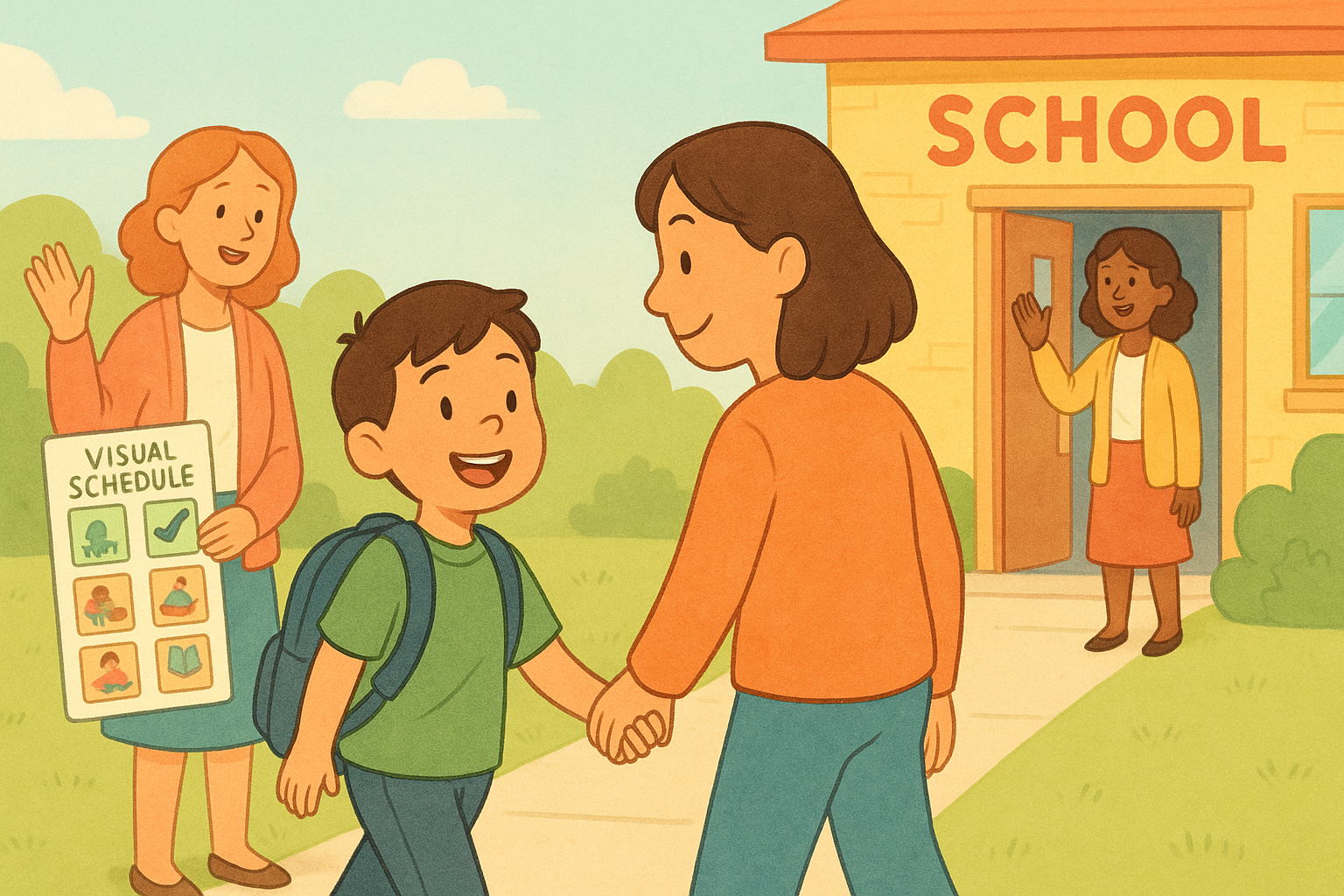Reducing Aggressive Behavior in Children with Autism Using ABA
Aggressive behaviors in children with Autism Spectrum Disorder (ASD) can be incredibly challenging for both the child and their families. These behaviors, which might include hitting, biting, kicking, or self-injury, can significantly impact a child's ability to learn, socialize, and participate in daily activities. Applied Behavior Analysis (ABA) is a scientifically validated approach that offers effective strategies for understanding and reducing aggressive behaviors in children with autism.Understanding Aggression in Children with Autism
Before intervening, it's crucial to understand why a child with autism might exhibit aggressive behavior. Aggression is rarely random; it almost always serves a purpose for the child. Common reasons include:
- Communication Deficits: Children with autism often struggle with verbal communication, making it difficult to express their wants, needs, or frustrations. Aggression can become a way to communicate "no," "I want that," or "I'm overwhelmed."
- Sensory Sensitivities: Over- or under-stimulation from sensory input (sounds, lights, textures) can be incredibly distressing and lead to aggressive outbursts as a way to escape or cope.
- Lack of Social Skills: Difficulty understanding social cues, taking turns, or sharing can lead to frustration and aggression during social interactions.
- Seeking Attention: For some children, aggression might be reinforced if it consistently leads to parental or caregiver attention, even if that attention is negative.
- Escape/Avoidance: Aggression can be used to escape or avoid demands, non-preferred tasks, or overwhelming situations.
- Access to Tangibles: The child might learn that aggression results in getting a desired toy, food, or activity.
How ABA Addresses Aggressive Behavior
ABA is based on the principle that behaviors are learned and can be changed. It involves a systematic process of identifying the function of a behavior, teaching alternative appropriate behaviors, and modifying the environment to support positive change. Here's how ABA typically approaches reducing aggression:1. Functional Behavior Assessment (FBA)
This is the cornerstone of effective ABA intervention. An FBA involves a detailed analysis of the aggressive behavior to determine its function (why it's happening). This is done through:
- Indirect Assessments: Interviews with parents, teachers, and caregivers to gather information about the behavior.
- Direct Observation: Observing the child in different environments to identify antecedents (what happens before the behavior) and consequences (what happens after the behavior).
- Data Collection: Systematically recording the frequency, intensity, and duration of aggressive episodes.
Understanding the function is critical because it dictates the intervention strategy. For example, an aggressive behavior that functions to escape a demand will require a different intervention than one that functions to gain attention.2. Antecedent Strategies
These strategies focus on modifying the environment or events
before the aggressive behavior occurs to prevent it from happening in the first place.
- Environmental Modifications: Reducing sensory overload, creating structured routines, or providing a quiet space.
- Visual Supports: Using visual schedules, "first/then" boards, or social stories to help the child understand expectations and transitions.
- Choice Making: Offering choices within tasks can increase compliance and reduce frustration.
- Preferred Activities/Items: Ensuring access to highly preferred activities or items can reduce the likelihood of aggression stemming from boredom or lack of engagement.
- Reducing Demands Gradually: If aggression is demand-related, demands can be introduced gradually and paired with positive reinforcement.
Teaching Replacement Behaviors
Instead of simply stopping the aggressive behavior, ABA focuses on teaching the child more appropriate ways to achieve their desired outcome. These are called "replacement behaviors."
- Functional Communication Training (FCT): This is a powerful strategy where the child is taught to use words, signs, or a communication device (e.g., PECS - Picture Exchange Communication System) to request what they want or need. If aggression's function is to get a toy, the child is taught to ask for the toy instead.
- Social Skills Training: Teaching appropriate ways to interact with peers, share, take turns, and resolve conflicts.
- Coping Skills: Teaching strategies for managing frustration, anxiety, or sensory overload, such as deep breathing, counting, or using sensory tools.
- Tolerance Training: Gradually increasing a child's ability to tolerate non-preferred tasks or situations.
Consequence Strategies
These strategies address what happens
after the behavior to either reinforce desired behaviors or discourage aggressive ones.
- Positive Reinforcement: Immediately and consistently rewarding the desired replacement behavior. If a child uses their communication device to ask for a break instead of hitting, they immediately get a break. This makes the appropriate behavior more likely to occur in the future.
- Extinction: Withholding the reinforcement that was previously maintaining the aggressive behavior. If the function of aggression was attention, then attention is withheld when aggression occurs (safely and appropriately). This requires consistency and can lead to an "extinction burst" (a temporary increase in the behavior) before it decreases.
- Response Cost: Removing a preferred item or activity as a consequence of aggressive behavior (e.g., losing a token from a token board).
- Time-Out: Briefly removing the child from a reinforcing environment after an aggressive behavior (used cautiously and only when the function is determined to be access to attention or tangibles).
Key Principles for Success
- Consistency: All caregivers and professionals must apply the ABA strategies consistently for them to be effective.
- Individualization: ABA programs are highly individualized, tailored to the unique needs, strengths, and functions of aggression for each child.
- Collaboration: Effective intervention requires strong collaboration between ABA therapists, parents, teachers, and other professionals.
- Data-Driven Decisions: ABA relies on continuous data collection and analysis to monitor progress and adjust interventions as needed.
- Focus on Positive Reinforcement: The emphasis is always on reinforcing desired behaviors rather than solely punishing undesired ones.
- Safety First: All interventions must prioritize the safety of the child and those around them.
Conclusion
Aggressive behavior in children with autism can be a significant hurdle, but ABA provides a structured, evidence-based framework for addressing it effectively.
By understanding the function of the behavior, implementing proactive antecedent strategies, teaching functional replacement behaviors, and consistently applying consequence strategies, ABA helps children with autism develop the skills they need to communicate effectively, regulate their emotions, and engage more positively with their world.
Through dedicated and consistent intervention, children can experience a significant reduction in aggressive episodes, leading to a better quality of life for them and their families.Take the First Step Towards Positive Change
If you're a parent struggling with aggressive behaviors in your child with autism, Applied Behavior Analysis (ABA) therapy offers a proven path to positive change. Learn how ABA can help your child develop essential communication, social, and coping skills, leading to a calmer, more fulfilling life for your entire family.
Contact CV Lighthouse today for a consultation and discover how our individualized ABA services can support your child's unique needs.











